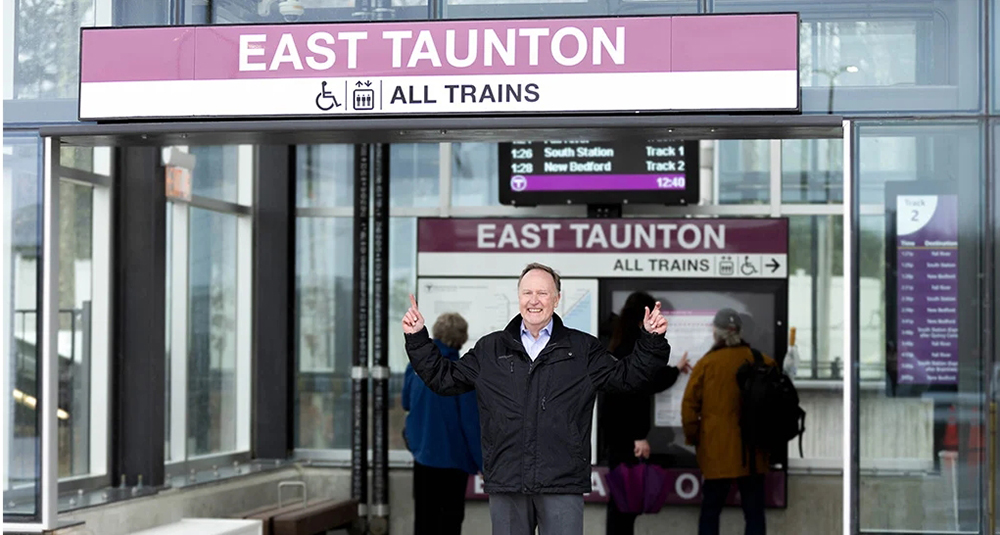News:
Spotlight Content
Posted: June 11, 2009
Professional Credentials
The LEED AP program has always been grounded in the pursuit of excellence and continuous improvement. To continue to meet these goals, GBCI developed a new, multi-faceted credentialing system that ensures that LEED professionals have the latest knowledge and understanding of green building practices and that they are recognized for distinction.
The new LEED professional credentialing program was developed to encourage green building professionals to maintain and advance their knowledge and expertise.
A LEED credential provides employers, policymakers, and other stakeholders with assurances of an individual's current level of competence and is the mark of the most qualified, educated, and influential green building professionals in the marketplace.
These goals had to be balanced with three market challenges:
Staying current: Technology, best practices, and the LEED rating systems evolve rapidly.
Differentiation: A credentialing system that provides for multiple levels of accomplishment and expertise is needed to distinguish among green building professionals with basic, advanced, and extraordinary levels of knowledge.
Specialization: Many green building professionals develop expertise in specific sub-sectors of the industry.
Three fundamental changes to the LEED credentialing program are being phased in throughout 2009:
Three levels of excellence that distinguish practitioners with basic, advanced, and extraordinary levels of knowledge.
Eligibility requirements for all levels of the exam system.
Credentialing maintenance requirements that ensure that LEED professionals have the latest knowledge and understanding of green building practices.
The built environment has a profound impact on our natural environment, economy, health, and productivity. In the United States alone, buildings account for: 72% of electricity consumption, 39% of energy use, 38% of all carbon dioxide (CO2) emissions, 40% of raw materials use, 30% of waste output (136 million tons annually), and 14% of potable water consumption. More statistics on the built environment in the U.S. and the growing size of USGBC membership and LEED are available in our Green Building by the Numbers document. www.usgbc.org/ShowFile.aspx?DocumentID=3340.
Benefits of Green Building
Environmental benefits: Enhance and protect ecosystems and biodiversity, Improve air and water quality, Reduce solid waste, Conserve natural resources
Economic benefits: Reduce operating costs, Enhance asset value and profits, Improve employee productivity and satisfaction, Optimize life-cycle economic performance
Health and community benefits: Improve air, thermal, and acoustic environments, Enhance occupant comfort and health, Minimize strain on local infrastructure, Contribute to overall quality of life
Tags:
Spotlight Content
MORE FROM Spotlight Content
Check out the New England Real Estate Journal's 2025 Fall Preview Spotlight
NEREJ’s Fall Preview is Out Now!
Explore our Fall Preview Spotlight, featuring exclusive Q&As with leading commercial real estate professionals and in-depth byline articles on today’s most relevant market topics. Gain insight into the trends, challenges, and opportunities shaping New England’s commercial real estate landscape this fall.
Explore our Fall Preview Spotlight, featuring exclusive Q&As with leading commercial real estate professionals and in-depth byline articles on today’s most relevant market topics. Gain insight into the trends, challenges, and opportunities shaping New England’s commercial real estate landscape this fall.

Columns and Thought Leadership

Shallow-bay wins on 495/128: A renewal-driven market with a thin pipeline - by Nate Nickerson
The Boston industrial market entered mid-2025 in a bifurcated state. Large-block vacancy remains elevated, while shallow-bay along the 495/128 corridor continues to prove resilient. Fieldstone’s focus on this geography positions us squarely in the middle of a renewal-driven, supply-constrained

How long should I hold a property for it to qualify as an investment property in connection with a 1031 tax-deferred exchange? - by Brendan Greene and Mark McCue
Internal Revenue Code (IRC) Section 1031 provides “No gain or loss shall be recognized on the exchange of property held for productive use in a trade or business or for investment if such property is exchanged solely for property of like kind which is to be held

How do we manage our businesses in a climate of uncertainty? - by David O'Sullivan
These are uncertain times for the home building industry. We have the threat of tariffs mixed with high interest rates and lenders nervous about the market. Every professional, whether builder, broker, or architect, asks themselves, how do we manage our business in today’s climate? We all strive not just to succeed, but

30 years on South Coast Rail: A journey to connect Southeastern Mass. with commuter rail - by Rick Carey
On March 24, 2025, a dream more than three decades in the making became a reality with the launch of the Massachusetts Bay Transportation Authority’s (MBTA) South Coast Rail commuter service. This milestone marks the completion of a project that overcame numerous starts and stops, including changes in leadership










.png)